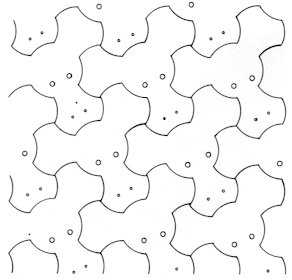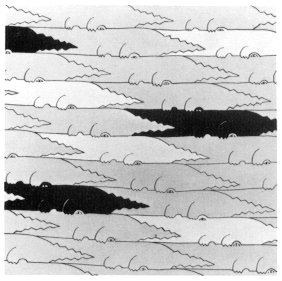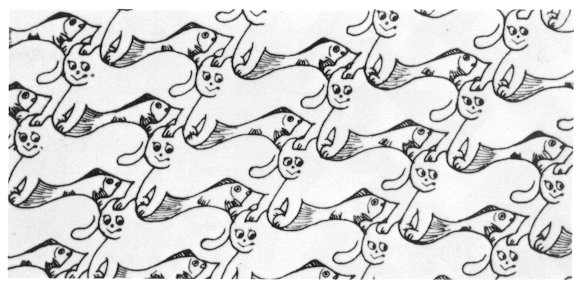|
(iii) Concrete shapes Because concrete shapes such as a plant, an animal or a receptacle have complex outlines, it may be impossible to use them as a shape for a mosaic or a tile. Though it is difficult to use these shapes as an element of a tile or a mosaic, some of them will be useful as a new building block, a pattern of textiles, or an idea for other domestic articles. In addition, extensive research of these problems is interesting as art in itself. The art works of Escher are some of the best examples. Let's continue research on the division of a two-dimensional space into the same shapes (concrete shapes) apart from actual applications, although we may be treating very complex shapes. The outline of concrete shapes is complex and hard to handle as a dividing shape. On the other hand, these attract artists. The interest in the meaning of shapes used are also attractive. Escher left a lot of images utilizing these interests as a lever. Important points noticed are listed in the form of
questions in the following two pages:
|


